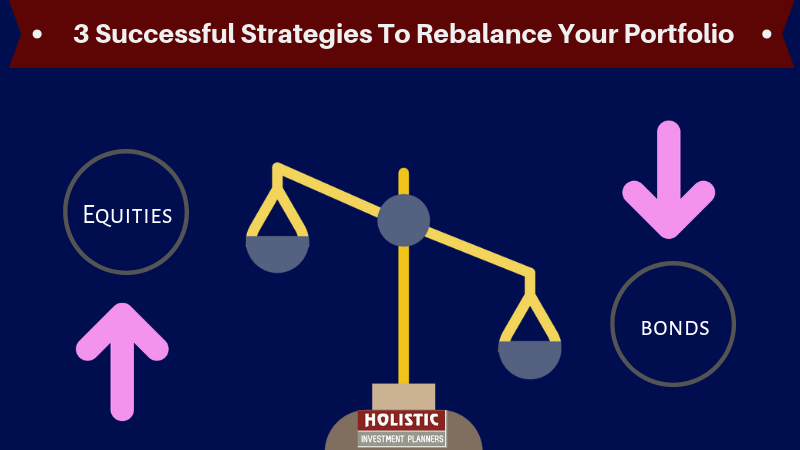Introduction
Rebalancing your portfolio is an important part of investing. It helps you keep your investments in line with your financial goals and keeps you from taking on too much risk. Rebalancing is also a great way to ensure your investments are diversified and that you're not over-exposing yourself to any one asset class. But how to rebalance your portfolio? how often should you rebalance your portfolio? And how do you go about doing it? Here's how often should you rebalance your portfolio.
What Is Rebalancing?
Rebalancing is the act of readjusting the amount of each type of asset or security in an investment portfolio so that it continues to match an investor's risk level and objectives. By keeping things balanced and diversified, investors are more likely to achieve their long-term goals while minimizing risk exposure.

How Often Should You Rebalance Your Portfolio?
The frequency with which you rebalance your portfolio depends on how quickly the markets move and how closely you monitor them. Rebalancing more often may be necessary if you're a hands-on investor who keeps a close eye on the markets. However, a more infrequent approach may be best if you're a passive investor who needs to pay more attention to the markets.
Why Should You Rebalance Your Portfolio?
Rebalancing your portfolio is important for two reasons: it helps you maintain the desired level of risk and return and keeps your investments aligned with your investment goals. When securities in a portfolio fluctuate in price, some may become more or less valuable than others relative to how much you originally invested. If left unchecked, this can cause your investments to drift away from your original objectives and increase volatility – which could lead to losses if not addressed. By regularly rebalancing, you can ensure that each asset makes up the correct proportion of your total investments according to how much risk you want to assume and how well they fit your goals.
When Should You Rebalance Your Portfolio?
The frequency at which you should rebalance your portfolio depends on how often you want to assess and adjust it according to how markets and individual securities perform. Generally speaking, the most common approach is to rebalance annually or semi-annually – though some investors will do so more frequently depending on their risk tolerance and investment objectives.
How To Rebalance Your Portfolio?
Rebalancing a portfolio can be easy and quick. Here's how:
1. Analyze Your Current Allocation
The first step of the process is assessing how much money you currently have in each asset class, how much you want to have, and how far your portfolio is from that goal. You can do this by looking at how much of each asset class you own – stocks, bonds, cash, etc. – how many shares or units of each security you hold, and how they're allocated across specific sectors or industries.
2. Calculate Your Target Allocation
Once the current allocation has been analyzed, it's time to determine the target allocation that will better align with your goals. This will depend on how much risk you're willing to take and how long-term investments fit into your overall financial strategy. For example, if you are looking for more aggressive returns over a shorter period, you may invest more heavily in stocks rather than bonds.
3. Buy and Sell Securities
The next step is rebalancing your portfolio, which involves buying and selling securities to reach your desired allocation. This can be done manually or through a brokerage account with automated features that will make adjustments for you automatically when certain thresholds are met. If you're doing it yourself, use limit orders to minimize transaction costs and taxes and ensure good execution prices.
4. Monitor Your Portfolio
Finally, once you've made the necessary trades to bring your portfolio back into balance, it's important to monitor how things are progressing from time to time – ideally on an annual or semi-annual basis. This will help ensure that your investments are on track with your goals and allow you to adjust if market conditions change or if you need to tweak how much risk you're willing to assume.

Conclusion
Rebalancing your portfolio is a critical step in ensuring it meets your investment objectives while minimizing risk. While the process may seem daunting, it doesn't have to be – with a few simple steps and some regular monitoring; you can keep things balanced and diversified so that your investments remain aligned with how much risk you want to take and how well they fit within your overall financial strategy. These measures will ultimately put you one step closer to achieving long-term success.

What Is the Consumer Confidence Index: Explain Briefly

A Complete Guide: Best USAA Credit Cards

Mastering Your Money: Taming Emotional Spending Habits

The 2023 Top Advantage Plans for Medicare

The Best J.P. Morgan Automated Investing Review 2023

Brewing Rebellion: The Boston Tea Party After 250 Years

How the 5 Cs of Credit Impact Your Loan Approval

Work for Labor Day Bargains

ATM Operations Demystified: Understanding Its Functionality

View Authorized User Purchases

Navigating AppleCare: Your Passport to Device Security and Peace of Mind
